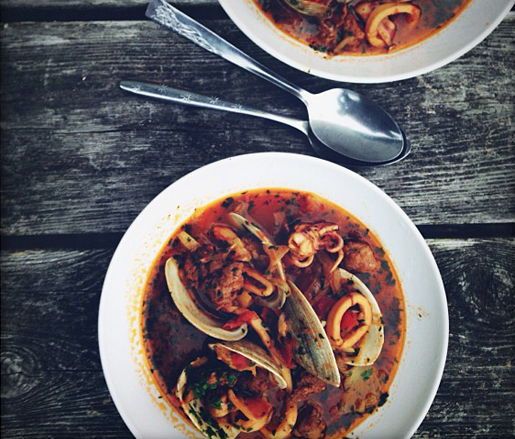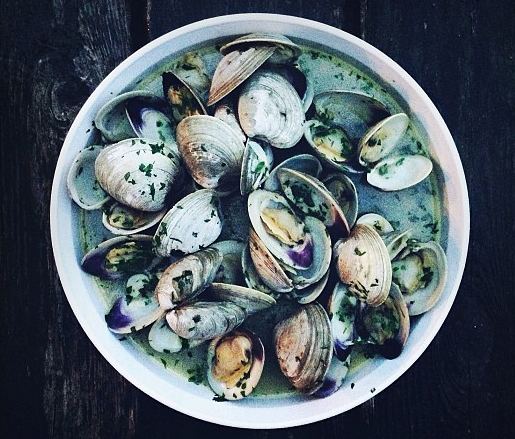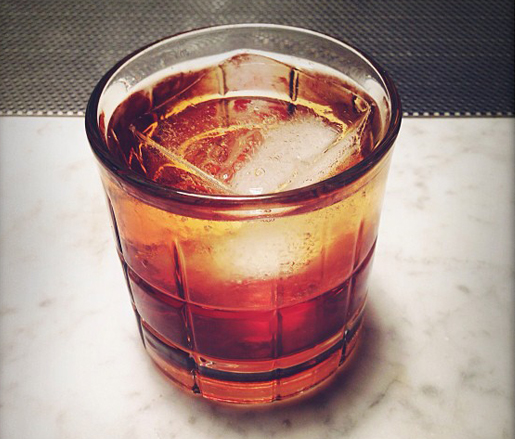
When pondering how to live better in the new year, we couldn't help but think about improving our food photos—so we consulted an expert. Few people in the industry have greater knowledge of successful food photography than Bon Appétit's creative director, Alex Grossman. The nominee for a 2012 JBF Award in Visual Storytelling (who also happens to have an enviable Instagram account of his own) sat down with us to share his expertise on capturing beautiful food images. Want to improve your skills? Read on!
JBF: Why do you think Instagram has exploded with food photography?
AG: Food revolves around the culture of sharing, so it's perfectly suited for social media. We're all experts in food, in a sense, because we eat three meals a day and nourish the people we love with it. Instagram is a forgiving medium—you don't have to say anything smart or pithy about it, so people are more willing to just share beautiful moments in their lives.

JBF: What are the biggest mistakes you see people making with their food photos?
AG: The biggest problem is shooting in a dark restaurant and then going overboard with brightening, so the image starts to break apart. That's the sad truth about capturing food: most great food moments happen in a dark atmosphere. People also shoot at weird angles and shoot on messy tables. Backdrops are important.

JBF: So, what are some tips for taking great food photos with a regular old phone camera and avoiding those pitfalls?
AG: First, don't just use Instagram! It's awesome for connecting with a lot of people, but there are better apps for photo editing. I use VSCO CAM or Snapseed to edit the photos, and then share them with Instagram. Second, the lighting: the easiest thing to do is just stick your plate near a window to capture natural light. Never use a flash. Third, the styling: don't make the pictures too complicated or go crazy with garnishes—the simpler, the better. And it's good to be authentic. If you're taking photos at night, let the lighting have some personality. Let it go blue or golden. So much about photographing food has to do with conveying a sense of time and place, so it's better to embrace it and make the lighting match the moment. I think the most successful photos are the ones that have a strong sense of mood and individual style.
JBF: Are you partial to any filters?
AG: No filters! VSCO and Snapseed are both great for playing with the image: you can adjust the light in a more sophisticated way, add color, boost contrast, adjust highlights, add “vignetting” (a cheap but useful trick), or fade to get an ethereal quality. They don't produce the fake, heavily filtered look that you often come across on Instagram. Snapseed also allows you to do some cool things, such as sharpen with the swipe of a finger, or use “selective adjust” to mess with a specific area of the image. Just allow yourself time to play around and see what you can do.

JBF: Do you use Instagram in both personal and professional contexts?
AG: Definitely! I'm always inspired by it, and through it I've stumbled across some really great photographers who I've reached out to and are now shooting for Bon Appétit—and not all of them are food photographers by trade or even known in the industry. Half of success is about talent and half is about exposure/access. Instagram gives people an amazing platform for getting their work out there.
For more inspiration, find Alex on Instagram at @alxgrossmn and keep up with us at @beardfoundation.
--
Elena North-Kelly is senior editor at the James Beard Foundation. Find her on Twitter and Instagram.



-57 web.jpg)


